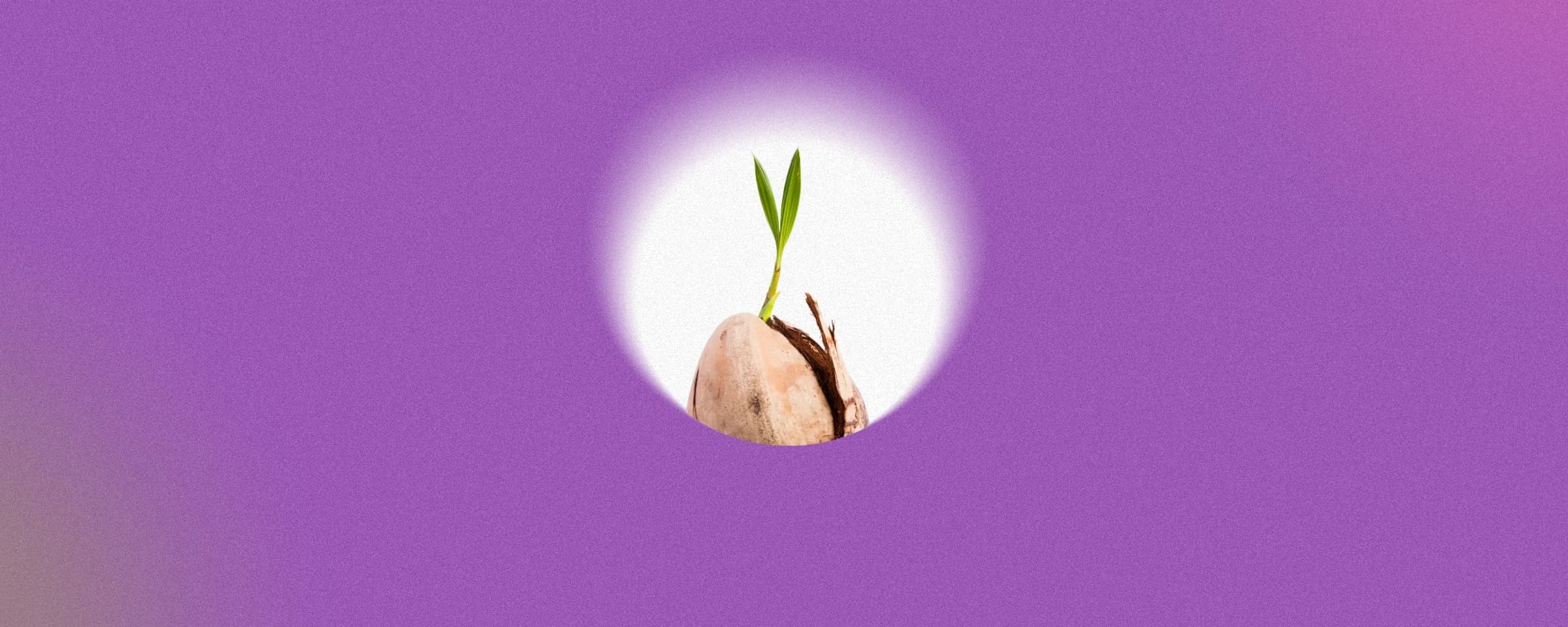Vanilla Extract vs Vanilla Essence: What's the Real Difference?
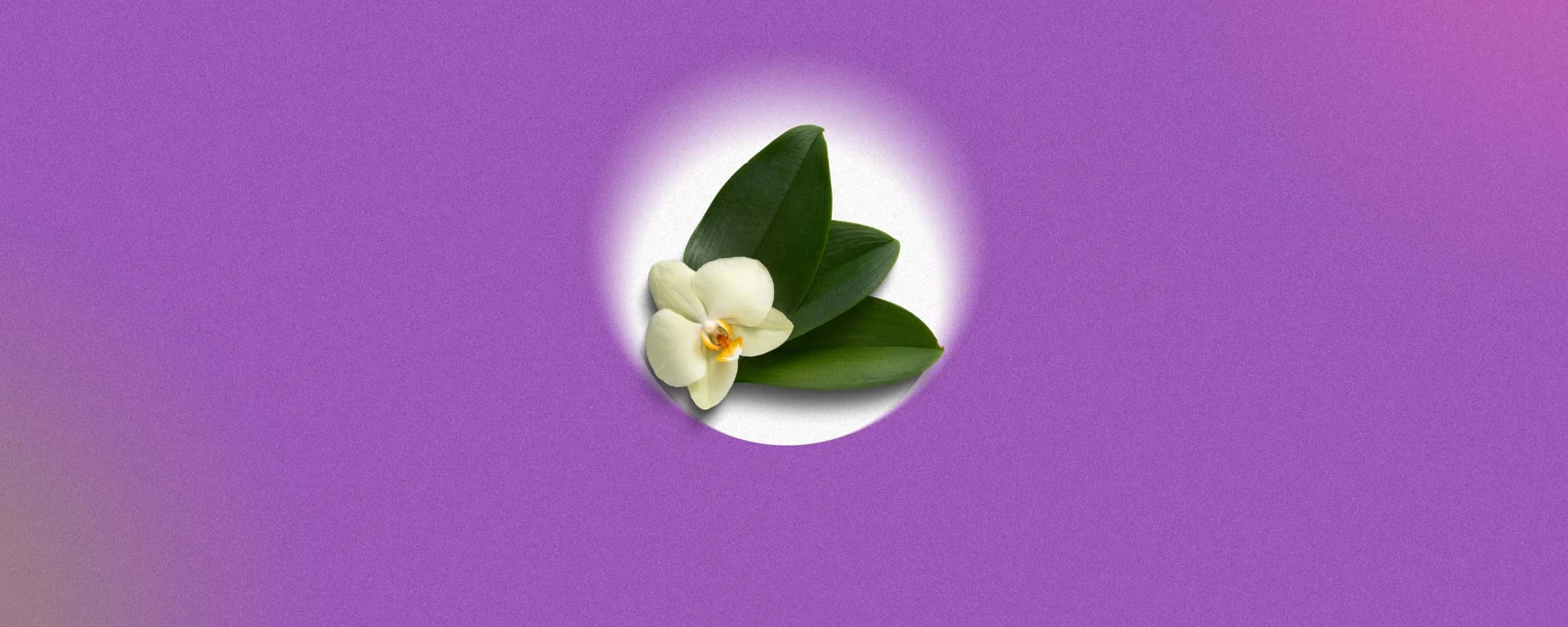
Introduction
Vanilla flavour is probably the only flavour that is loved by both kids and adults alike. Whether it's milkshakes, chocolates, ice cream, or even fruit custards, everyone enjoys the rich aroma and flavour of vanilla. It is thick, creamy, and warm, and you can hardly ever see a baking recipe without it.
However, some recipes call for vanilla extract while some call for vanilla essence. So, which should you choose?
Vanilla extract is made by soaking real vanilla beans, usually from Vanilla planifolia, in a solution of water and alcohol. Over weeks or months, the alcohol draws out the flavour compounds from the beans, resulting in a dark, aromatic liquid with an intense vanilla flavouring.
The essence on the other hand is generally an artificial one.
Whether you're a home baker or a professional chef, understanding the difference between vanilla extract and vanilla essence can help you make better choices in your cooking, baking, or even fragrance applications.
In this blog, you will understand the difference between vanilla extract and vanilla essence, what should you use in your cake mix: vanilla extract or vanilla essence, and more.
What is Vanilla Extract?
Vanilla extract is prepared by letting actual vanilla beans, most often Vanilla planifolia, steep in a mixture of water and alcohol. Over months or weeks, the alcohol extracts the flavour compounds from the beans, leaving a dark, aromatic liquid with a very strong vanilla flavour.
Vanilla extract is considered the natural version of vanilla flavouring, praised for its complex aroma and richness. It is brimful of more than 200 flavour compounds, of which vanillin is the most dominant. This is particularly strong in the infusion of vanilla beans, as indicated by the mention of vanilla extract fragrance on the labels.
What is Vanilla Essence?
Vanilla essence is normally an artificial one. It is produced with pure chemicals, such as vanillin, which is derived from materials like wood pulp or petrochemicals, to replicate the smell and taste of natural vanilla.
Vanilla flavouring may be produced using a combination of natural and artificial flavourings and colours, and sugar substitutes. Nevertheless, unlike extract, it does not use actual vanilla beans; however, it is popular because it is cost-effective, especially when baking in large quantities.
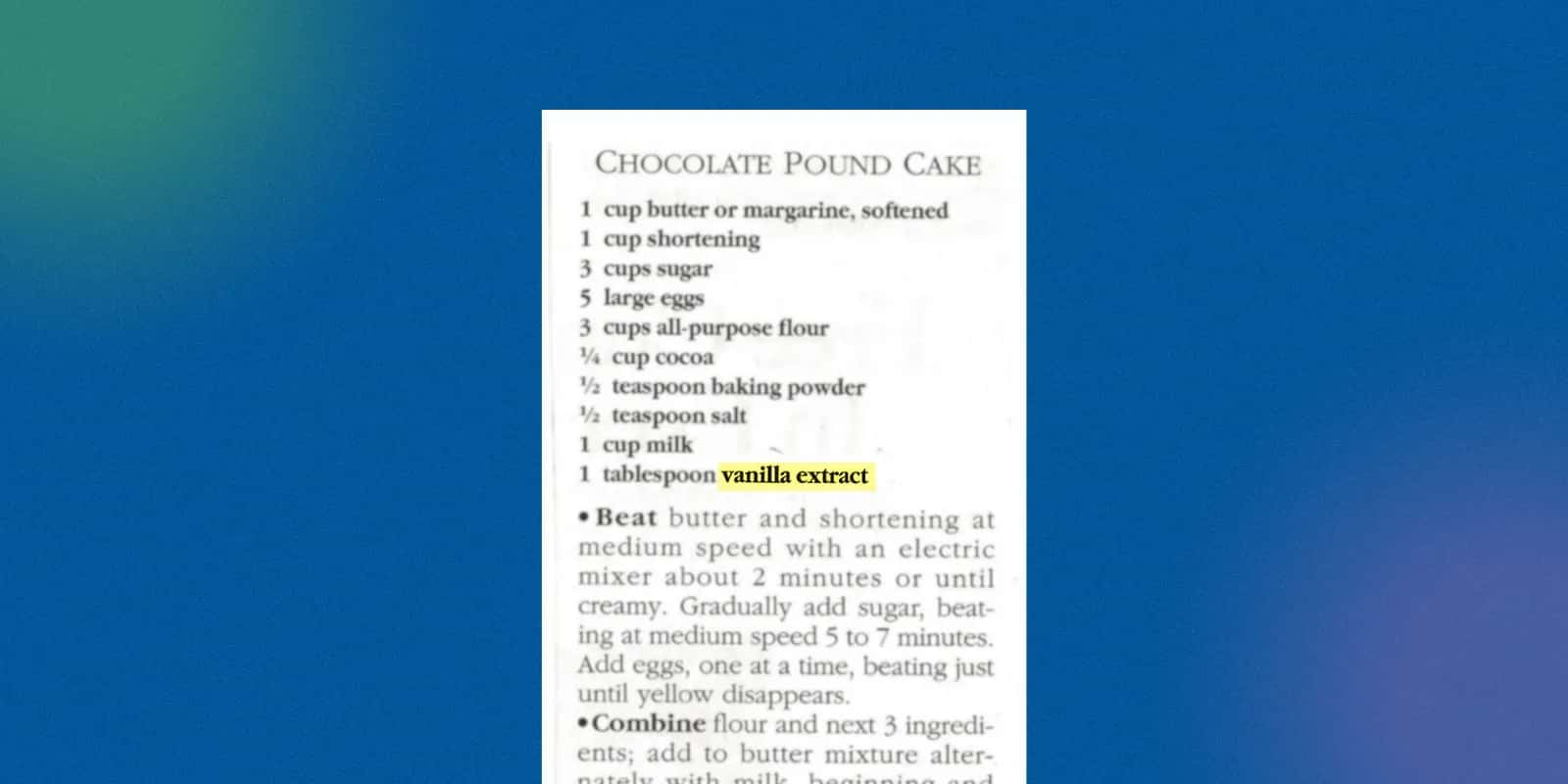
Is Vanilla Extract the Same as Vanilla Essence?
If you're asking, “Is vanilla extract and vanilla essence the same?” or “Is vanilla extract the same as vanilla essence?”, the answer is no because of how they are sourced. Extract is made from real vanilla beans, while essence is chemically engineered. The confusion arises because both are liquid forms used for vanilla flavouring, but they differ significantly in origin, strength, and composition.
Key Differences Between Vanilla Extract and Vanilla Essence
Here is a quick tabular overview of the distinguishing characteristics of vanilla extract and essence:

Which One is Better for Baking – Vanilla Extract or Essence?
The choice between vanilla essence and vanilla extract comes down to purpose and preference:
- Use vanilla extract for high-end cakes, custards, and recipes where vanilla is the star. It delivers authentic taste and aroma.
- Choose vanilla essence for cake or everyday recipes where other strong flavours are present, and cost is a concern.
For example, in buttercream frosting, where vanilla is prominent, extract is ideal. In chocolate brownies, where vanilla takes a backseat, essence will do the job.
How Does Vanilla Flavouring Work in Recipes?
Vanilla flavour actually boosts the overall smell and richness of desserts. It moderates sweetness, enriches taste and slightly elevates other flavours. When in savoury cooking, it can be applied to tame spicy or tart flavours.
The vanilla extract and the vanilla essence do not react in the same way when heat is added, such as when baking. Extract lasts longer because it is alcohol base, but the essence can be lost after a short time. To preserve the taste of vanilla, do add it late in the process, when possible.
Can You Use Vanilla Extract or Essence as a Perfume?
Yes, you can. Both vanilla extract and vanilla essence as perfume are trending in DIY beauty. However, there’s a difference:
- Vanilla extract can be used as a perfume and dabbed on the skin (diluted), leaving a warm, sweet vanilla fragrance.
- Natural vanilla essence is occasionally used in body oils and mists.
That said, be cautious of alcohol content in the extract and potential allergens in the synthetic essence—always patch test.
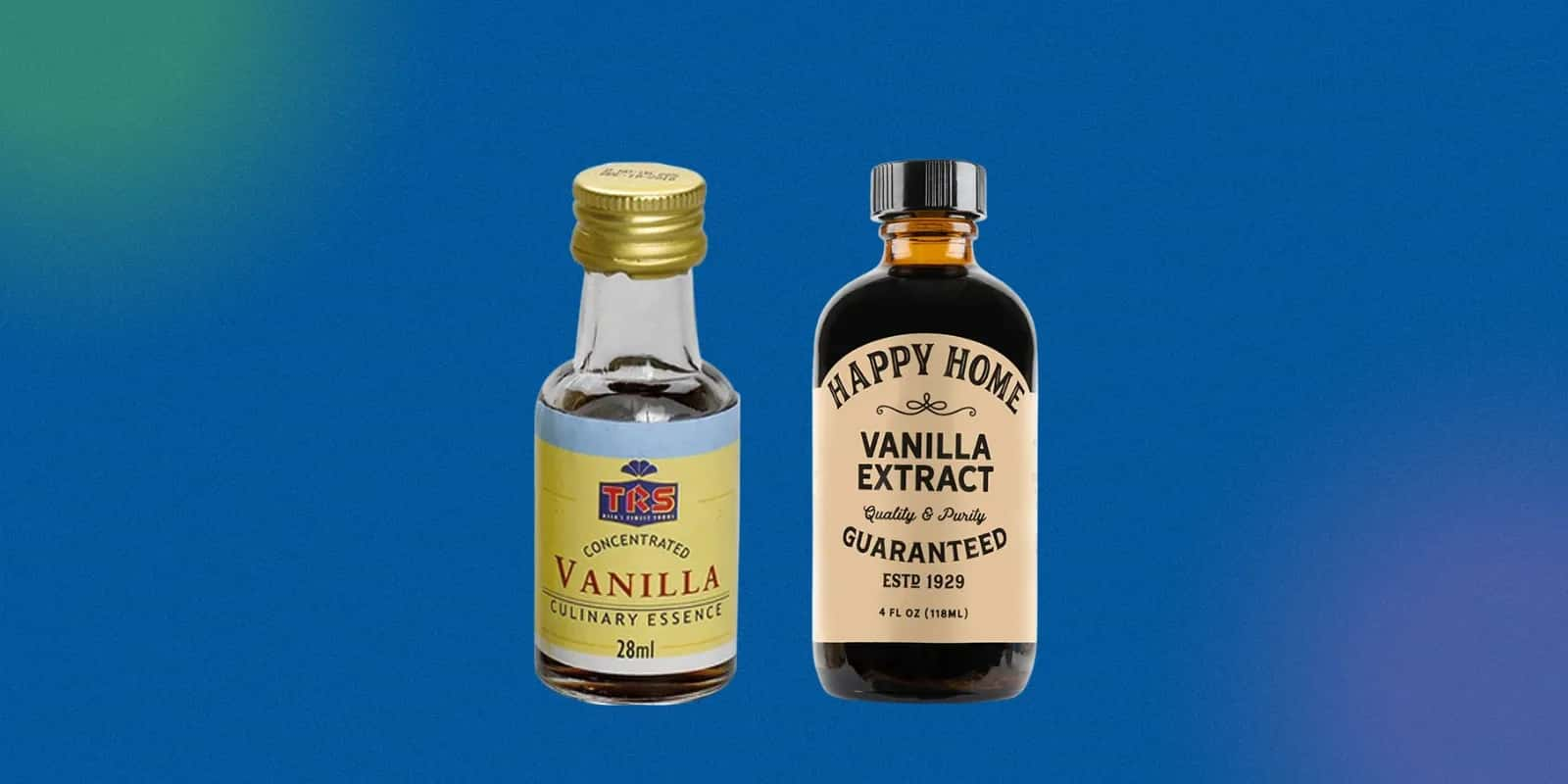
Natural Vanilla Essence vs Artificial Vanilla Essence
The real beans are processed differently from an extract. It could be alcohol-free with other natural flavour carriers. It is a decent compromise between extract and synthetic ones.
On the contrary, artificial vanilla essence is simply vanillin —a laboratory product. It is not as smooth and natural-looking as real vanilla. Whether you want to bake or use it for skincare, it is best to use natural vanilla essence that is of higher quality and contains fewer additives.
Vanilla Paste and Other Forms of Vanilla Flavouring
Vanilla paste is a thick, sweet syrup made from vanilla bean seeds, extract, and sugar or glycerin. For recipes where visuals are everything, such as crème brûlée and ice cream, it's ideal.
Other forms of vanilla vanilla include:
- Vanilla pods (beans) – sliced and scraped for intense flavour
- Powdered vanilla – for dry mixes like baking blends or protein powders
- Vanilla sugar – sugar infused with vanilla beans
All offer different levels of vanilla flavouring, suitable for specific applications.
How to Make Vanilla Extract or Vanilla Flavouring at Home
Ever wondered how to make vanilla flavouring at home? It’s easier than you think. Here are some steps to make vanilla extract:
- Slice five to six vanilla beans lengthwise.
- Place in a clean glass jar.
- Add 250 ml vodka (or rum).
- Seal and store in a dark place for six to eight weeks, shaking the container weekly.
This homemade vanilla extract yields a deep vanilla flavour and can last for years.
How to make vanilla flavour without alcohol:
- Use glycerine instead of vodka.
- Let it steep longer (eight to ten weeks).
- Store in the fridge once opened.
Understanding the Taste of Vanilla – What Does Vanilla Really Taste Like?
The real vanilla flavour is sweeter, floral, creamy, woody and even spicy. Good vanilla extract is rich, whereas essence is usually just like a candy finish.
Can You Replace Vanilla Extract with Essence?
Yes, but you will have to change the amount. Vanilla essence is less concentrated, so you may need to add more when using it as a replacement for the extract. This can alter the flavour profile in more sensitive dishes.
When substituting:
- One teaspoon vanilla extract = Two teaspoons vanilla essence
- Always taste test when possible.
- The substitution also affects vanilla-flavoured results in baking and custards. Extract gives richness; essence offers surface-level sweetness.
Tips for Buying the Right Vanilla Flavouring
When choosing between vanilla extract and vanilla essence, keep these in mind:
- Read the label: Look for “pure vanilla extract” or “natural vanilla essence.”
- Avoid artificial colours and sweeteners in synthetic products.
- Check alcohol content if using in raw dishes.
- Consider sustainability: Real vanilla supports farming communities in regions like Madagascar and India.
Always choose based on your budget, recipe, and expected flavour outcome.
Conclusion: Which Vanilla Option Works Best for You?
Deciding between vanilla essence vs vanilla extract is a matter of choice. Vanilla extract is your best friend when you need that genuine flavour and are willing to spend a little more.
Vanilla essence will do the trick when you want to do some casual baking or in situations where budgets are tight.
Whether it's frosting a cake, enjoying a comforting bowl of kheer, or simply appreciating the essence of vanilla in your skincare, the knowledge that the real difference provides gives you the power to utilise this incredible ingredient to its fullest.
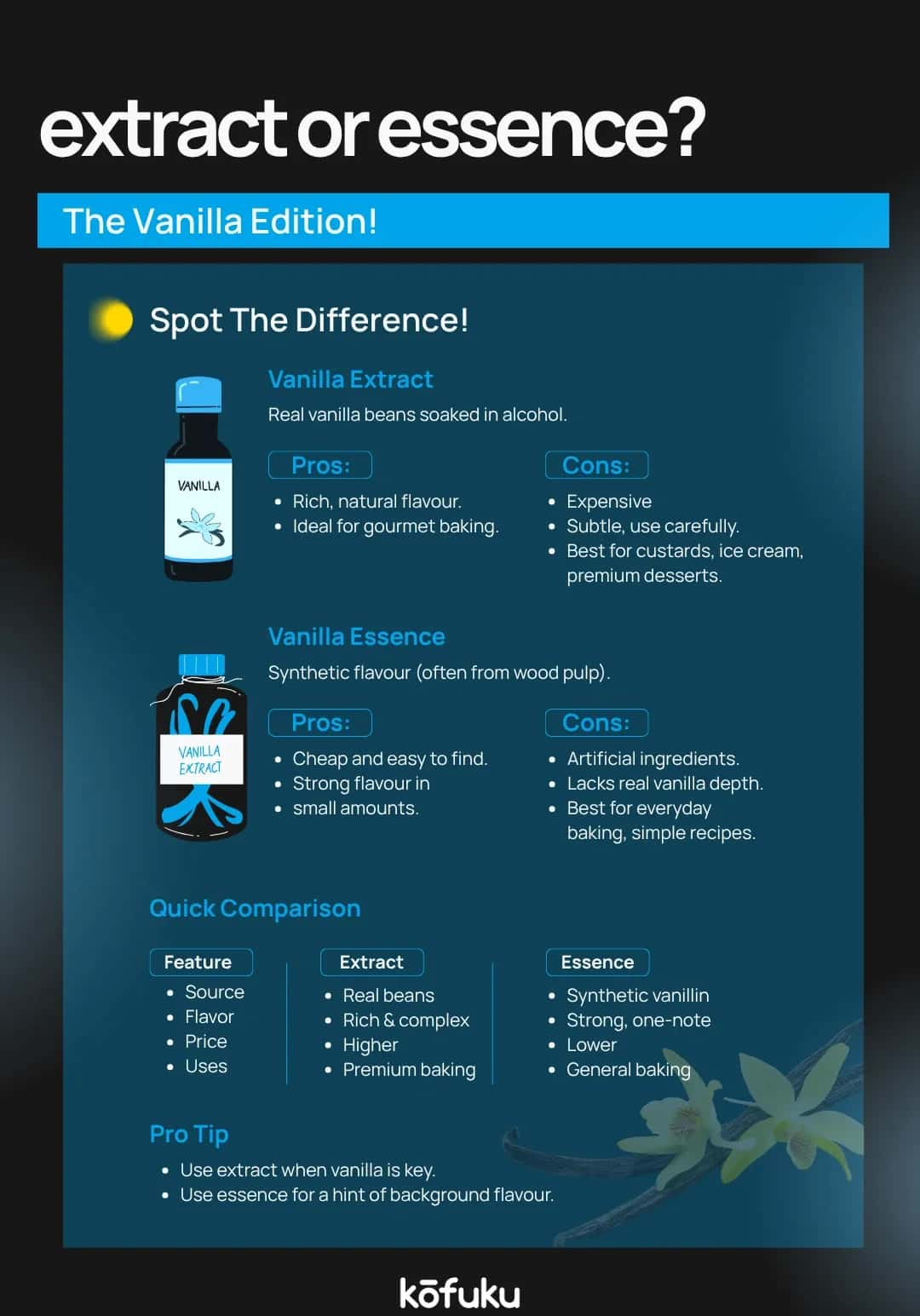
FAQs
Q. Are vanilla extract and vanilla essence the same?
A. No, they are not. Vanilla extract consists of actual vanilla beans steeped in alcohol to provide a natural, true flavour. Vanilla essence is usually artificial, utilizing artificial vanillin to reproduce the flavour. Extract is more real, whereas essence is less costly and less potent.
Q. Can I use vanilla essence for cakes instead of extract?
A. Yes, you can substitute vanilla essence with cakes, particularly in economical or daily baking. But it's not as flavoured as extract so you might have to use less. For special cakes or recipes where vanilla is the key note, extract is preferable.
Q. How do you make vanilla flavouring at home?
A. To make vanilla flavouring at home, soak 5–6 split vanilla beans in 250 ml of vodka or food-grade glycerin. Store in a glass jar in a dark place for 6–8 weeks (up to 10 in case of glycerin) and shake weekly. The result is a rich, natural vanilla extract ideal for cooking and baking.
Q. Is it safe to use vanilla extract or essence as perfume?
A. Vanilla extract or essence as perfume is generally safe if diluted and patch-tested. The sweet, comforting aroma makes it popular in DIY body mists. However, extracts contain alcohol, which may irritate sensitive skin. Always avoid synthetic vanilla essence with added chemicals near broken or sensitive skin.
Q. What’s better for baking – vanilla extract or vanilla essence?
A. Vanilla extract is more suitable to use when you desire a good, natural taste. It is fine for cakes like custards, frostings, and vanilla desserts. Vanilla essence is cheaper and appropriate to use for basic cakes or bakes where vanilla is not the primary taste. Select according to your recipe.

Decoding Hope: Understanding the Breast Cancer Survival Rate
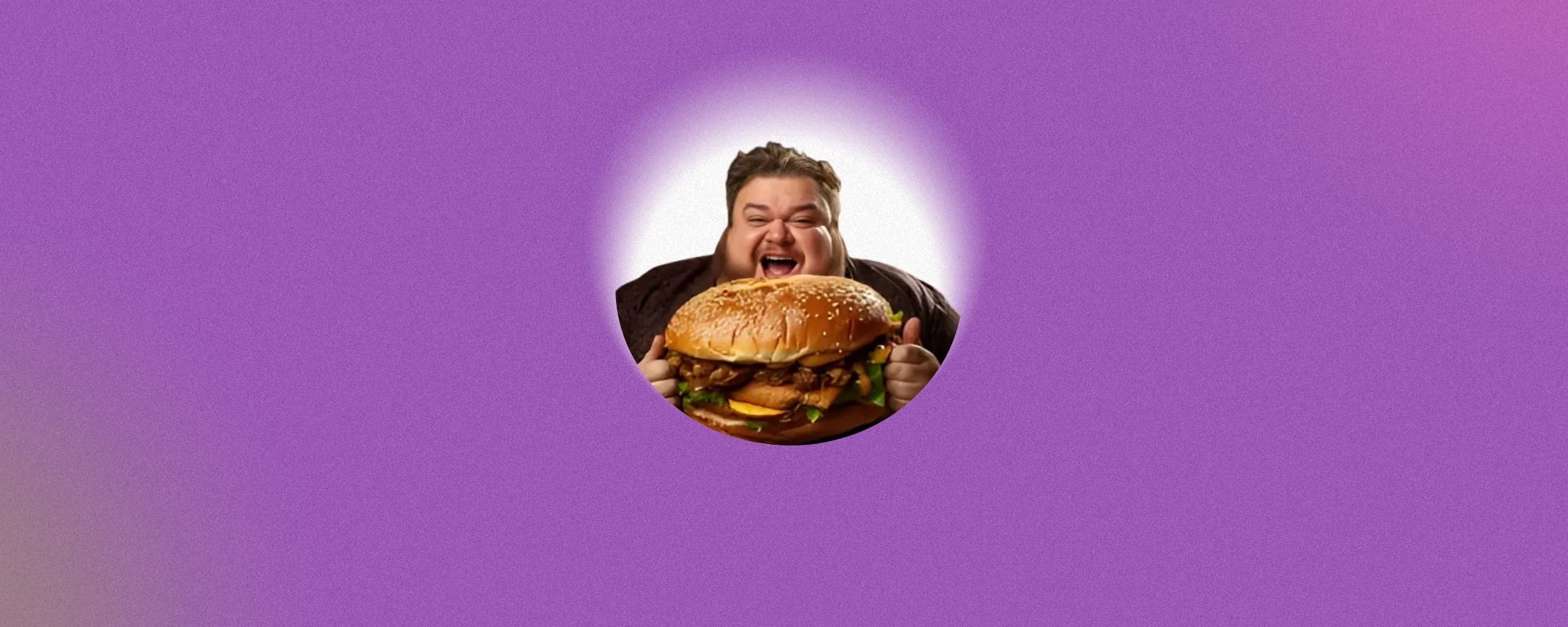
Healthy vs Unhealthy Food: Differences, Disadvantages, and Smart Choices

10 Health Benefits of Apple Cider Vinegar You Should Know
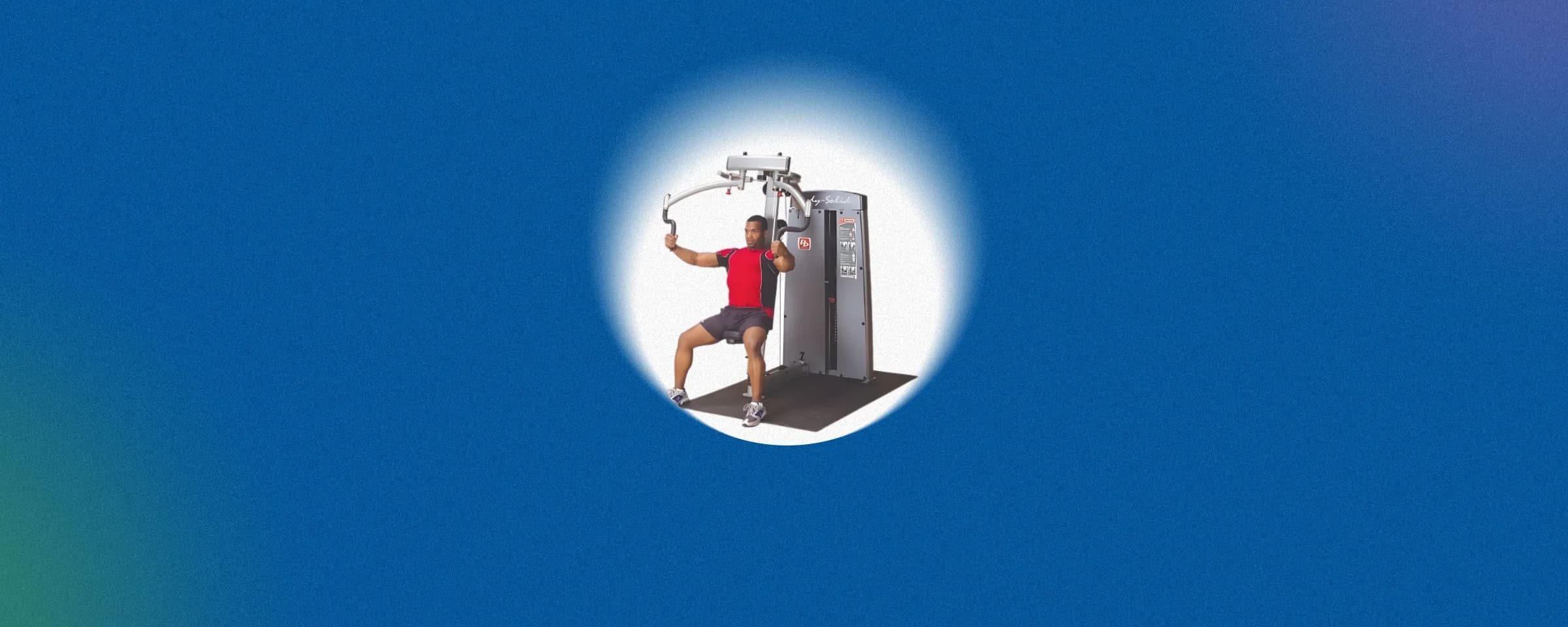
6 Exercises to Improve Posterior Deltoid Strength

7 Quick Remedies for Indigestion
